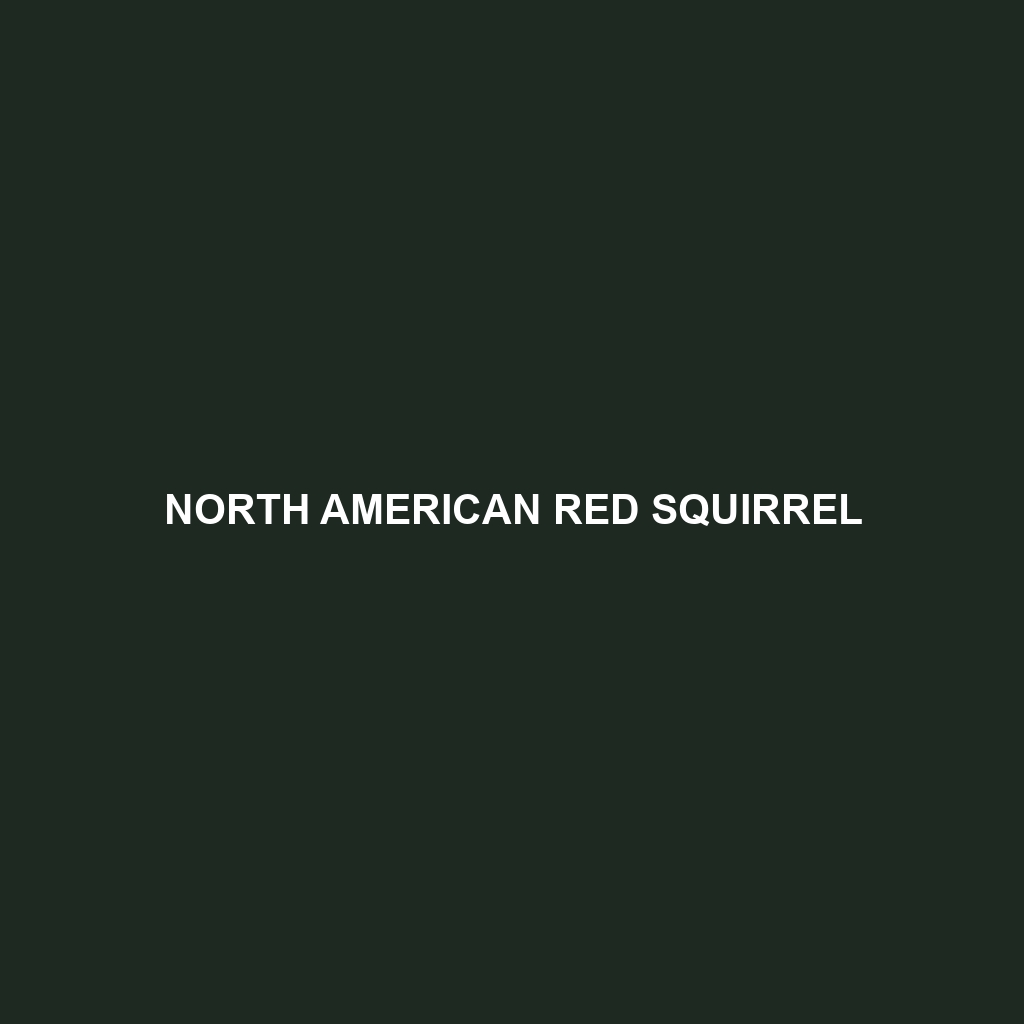North American Red Squirrel
Common Name: North American Red Squirrel
Scientific Name: Tamiasciurus hudsonicus
Habitat
The North American Red Squirrel is primarily found in coniferous and mixed forests across Canada and the northern United States. This species thrives in areas with abundant pine, spruce, and fir trees, as these environments provide vital resources for nesting and foraging. Occasionally, they can also be spotted in urban parks and gardens, where coniferous trees are present.
Physical Characteristics
Adult North American Red Squirrels typically measure between 8 to 10 inches in body length, with an additional 7 to 9 inches of bushy tail. Their fur varies in color from bright reddish-orange to a more subdued grayish-brown, featuring white underbellies. Distinctive characteristics include small ears and large black eyes, which enhance their excellent vision. Their sharp claws and agile bodies make them exceptional climbers, aiding their survival in wooded regions.
Behavior
North American Red Squirrels are known for their lively and acrobatic behaviors. These squirrels are highly territorial, often engaging in vocalizations and displays to deter intruders. They are diurnal, meaning they are active during the day, and spend much of their time foraging for food. Red squirrels are also known to gather and store food, especially during the autumn months, which they hide in various locations for later use.
Diet
The diet of the North American Red Squirrel primarily consists of seeds from conifer cones, nuts, berries, and occasionally fungi. They are known to consume a varied diet based on seasonal availability, which includes fruits and insects in addition to their staple diets. Their foraging habits play a significant role in forest regeneration as they help disperse seeds.
Reproduction
North American Red Squirrels typically breed twice a year, with mating seasons occurring in late winter and midsummer. The female usually gives birth to a litter of 2 to 8 young after a gestation period of approximately 36 days. The young are born blind and depend entirely on their mother for care until they are mature enough to begin exploring their environment around eight weeks of age.
Conservation Status
The current conservation status of the North American Red Squirrel is classified as Least Concern by the IUCN. However, habitat destruction and climate change pose potential risks to their populations, emphasizing the need for continued monitoring and conservation efforts.
Interesting Facts
Red squirrels have a remarkable ability to adapt to different environments and are known for their use of vocalizations to communicate. Additionally, they are one of the few species that can successfully thrive in urbanized areas if sufficient tree cover is available. Their unique behaviors and physical adaptations make them fascinating subjects for research in wildlife ecology.
Role in Ecosystem
The North American Red Squirrel plays a crucial role in its ecosystem as both a seed disperser and a prey species. Their activities help maintain healthy forest ecosystems by facilitating plant growth through seed dispersal. Moreover, they serve as a food source for larger predators, thus contributing to the biodiversity of their habitats.
